
The Howard DGA-6 was a pioneer racing plane, nicknamed "Mister Mulligan". It was the only airplane ever designed for the specific purpose of winning the Bendix Trophy. The plane was designed and developed by Ben Howard and Gordon Israel, who later became an engineer for the Grumman Aircraft Engineering Corporation. Mister Mulligan was designed to fly the entire length of the race nonstop and at high altitude. Neither had ever been done before. Mister Mulligan won the trophy, and thus changed the way in which long distance airplanes were designed.

PZL.26 was a Polish sports plane built in 1934 in the PZL works. Ordered by the Ministry of Defence, it was specifically designed for the upcoming Challenge 1934 International Touring Aircraft Contest.

The Bellanca 28-92 Trimotor was a racing aircraft built to compete in the Istres-Damascus-Paris Air Race of 1937, and was paid for by popular subscription in Romania. Christened Alba Julia it was piloted by Captain Alexander Papana of the Romanian Air Force.

The Brown B-2 Racer was an American-built small monoplane racing aircraft built in 1934.
The Cessna CR-2 was a mid-winged racing aircraft in the CR series of Cessna racers.

The Chester Jeep aka the Chester Special #1 was an air racer built by Art Chester for the 1932 National Air Races. The aircraft once held the world's speed record for aircraft at 237 mph (381 km/h).
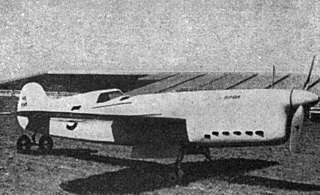
The Chester Goon aka The Chester Special #2 was a single-engine taildragger-configuration monoplane racer built for the 1938 National Air Races.
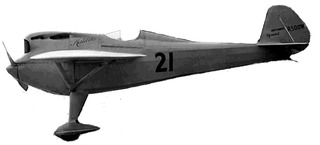
The Folkerts SK-1,Speed King One, Mono Special, Matilda, Fordon-Neumann Special, Hardwick-Whittenbeck Special was a racer built for the 1930 American Cirrus Aircraft Engine Company sponsored American Cirrus Derby.

Chief Oshkosha.k.a.Buster is a homebuilt racing plane designed to compete in the 1931 American Cirrus Races.

The Wittman D-12 "Bonzo" was an air racer designed by Steve Wittman for the Thompson Trophy races. The aircraft's top speed of 325 mph (523 km/h) made it faster than any United States military aircraft of the era.
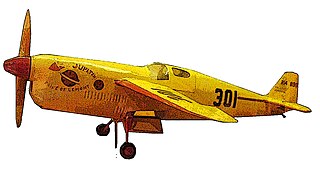
The Folkerts SK-3 a.k.a. "Jupiter, Pride of Lemont" was the third in a series of air racers developed by Clayton Folkerts.

The Howard DGA-4 a.k.a. Mike, and DGA-5 a.k.a. Ike and "Miss Chevrolet" was the next in a series of racers from Ben Howard. He built two examples, "Mike" and "Ike", each with a different landing gear design.

The Nicholas-Beazley Pobjoy Special aka the Nicholas-Beazley Phantom I, aka the Wittman Phantom, aka the Flagg Phantom, aka the Reaver Special was a world record holding air racer of the 1930s

The Wedell-Williams Model 22 was a racing aircraft, two examples of which were built in the United States in the early 1930s by the Wedell-Williams Air Service Corporation. It was one of three early projects by aircraft designer Jimmy Wedell to create a racer and was built specifically to compete in the 1930 All-American Flying Derby from Buffalo to Detroit. It was a braced, low-wing monoplane originally powered by an inline Cirrus engine and equipped with fixed landing gear in large spats.
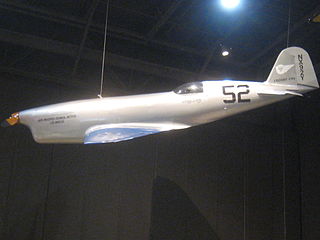
The Crosby CR-4 is a racing aircraft developed in the late 1930s

The Rider R-6 was the last of the Keith Rider designed racing aircraft of the 1930s.
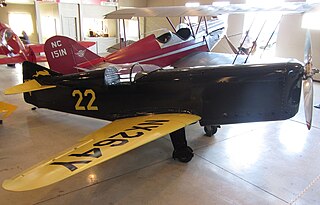
The Rider-Elmendorf R-5 Jackrabbit is an aircraft designed and built to compete in the National Air Races.

The Hawks Miller HM-1, named Time Flies was an American racing aircraft that was the joint project of pilot-owner, Frank Hawks and Howell W. "Pete" Miller, chief engineer for the Granville Brothers. Although very advanced for its time with an enclosed cockpit that highlighted its streamlined lines, development ended after a crash during testing. A completely new design emerged when the aircraft was re-configured as a two-seat military aircraft.

The Loving/Wayne WR-1 Love is a single seat, midget racer built in the 1950s.
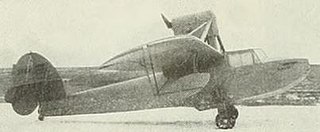
The Argonaut Pirate was a 1930s, U.S., three place, single-engined pusher configuration amphibious aircraft. Only two were built.



















